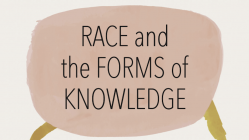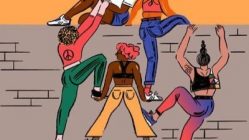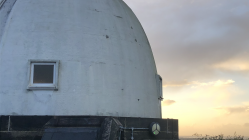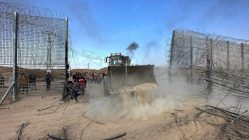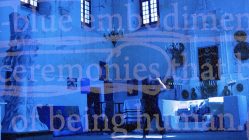Spatz, Ben, with Nazlıhan Eda Erçin, Agnieszka Mendel, and Elaine Spatz-Rabinowitz. “Diaspora: An Illuminated video essay.” Videography by Nazlıhan Eda Erçin and Agnieszka Mendel. Photographs by Garry Cook. Judaica: An Embodied Laboratory for Songwork. Global Performance Studies 2.1 (2018).
This video article was originally published in Global Performance Studies, the journal of Performance Studies International, with the following research statement.
“Diaspora” is a thirty-minute illuminated video article about contemporary Jewish identity. The illuminated video essay based on embodied audiovisual research is a new form of work that draws on visual anthropology and media studies to propose a distinctive approach to centering embodiment and experimental practice through the medium of video. All audio and video footage in the article is taken from a single three-hour laboratory session on 3 August 2017 at the University of Huddersfield. This material is supplemented by textual “illuminations” that provide a broader window into the AHRC-funded project “Judaica: An Embodied Laboratory for Songwork” (2016-2018) across its autoethnographic, cultural-political, and methodological dimensions. The research method underpinning this process uses dynamic configurations of roles and relations to structure emergent interactions that are transversally traced by audiovisual recording. In this case, the presence of a special guest in the lab allows the video article to explore complex relationships between drawing and singing, kinship and craft, technique and identity.
The video begins with ten minutes of uncut audiovisual footage, gradually revealing the multi-layered density of laboratory-based embodied research. Within a single long take, many distinct elements interact in unpredictable but meaningful ways: bodies, songs, charcoal, books, the camera, and more. Because the underlying methodology fully integrates videography within a space of experimental practice, the audiovisual trace of these interactions is simultaneously an aesthetic composition and an epistemic testament to “what happened” at a particular time and place. This audiovisual tracing is supplemented by editorial interventions, which further frame and contextualize the documented practice. In the second and third parts of the video, more complex editing and montage techniques are employed to draw out questions about identity and ancestry, weaving autoethnographic and historical information into the unfolding songwork. I call these textual annotations “illuminations,” alluding to medieval manuscripts in which visual images illustrate a primarily textual work. Here the hierarchy of meaning is reversed, with textual annotations supplementing and expanding upon a primarily audiovisual document. This format also recalls the multiple layers of annotation in the Talmud, which has been called the first hypertext. Crucially, all of the textual annotations — including the title — were chosen after the lab session was completed. The video therefore draws out and names the theme of “diaspora” from a practice session that had no such explicit focus.
The spine of the video, and of the Judaica project as a whole, is a set of songs learned from recordings in the Smithsonian Folkways digital archive, all of which are categorized there as “Judaica” despite great linguistic, cultural, geographic, and temporal diversity. “Diaspora” stretches from song to text, from theatre to visual arts, and from personal autobiography to a contemporary politics of Jewish identity that emerges from the intersection of lost Polish synagogues, spiritual and postcolonial critiques of Zionism, and critical theories of identity. Brief introductions to each of the four practitioner-researchers, along with short framing statements that describe the research process, provide additional context for a journey whose destination lies within the embodied and epistemic territory of songwork, where — as the video suggests — “song and action have as much power as words” to shape the active and creative work of memory. Through its distinct form, this video article aims to articulate the richness of experimental practice — responding to questions like “What is a song?” — with a juxtaposition of textuality and audiovisuality that extends the epistemic reach of both into new territory.
See photos of this session in Judaica lab: art in motion (gallery).


